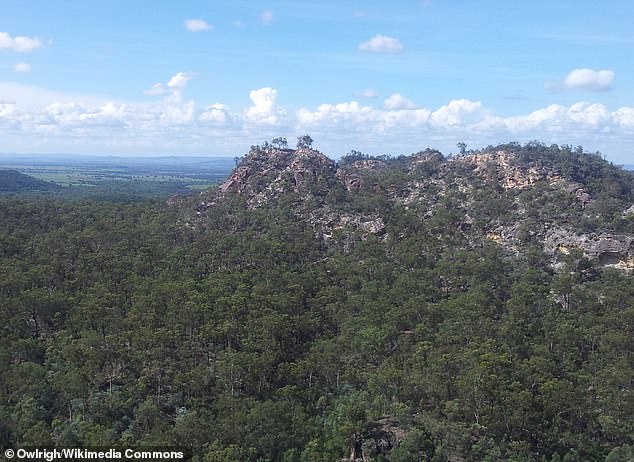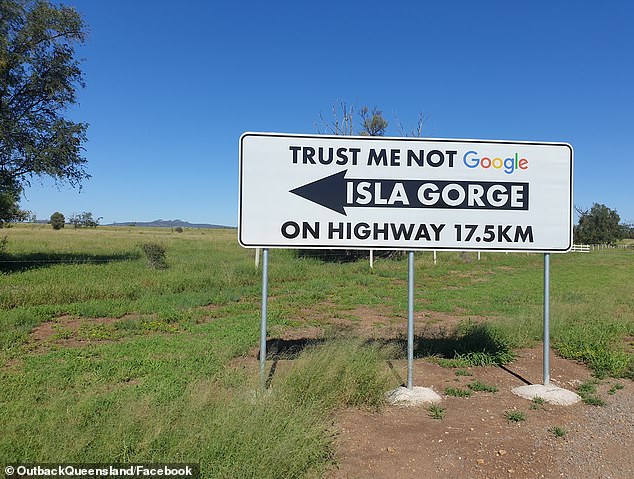Central Queensland farmer sick of Google directing strangers onto his remote comes up with unique solution
A farmer has come up with a unique solution to fix a Google Maps bug after hundreds of tourists found themselves on his property looking for a scenic national park.
Cattle rancher Graham Anderson, who lives in the rural town of Isla, about 330 kilometers west of Bundaberg in central Queensland, said he was tired of strangers showing up on his property.
Mr Anderson said tourists were showing up at his farm as they tried to make their way to nearby Isla Gorge National Park.
He said an error on Google Maps incorrectly directed visitors to his property instead of the park.
Queensland farmer Graham Anderson (pictured) said strangers turned up at his cattle ranch on the way to Isla Gorge National Park in Central Queensland
“People kept coming in and saying it was Google, that they followed the maps of our property to get there,” Anderson told the newspaper. ABC.
After Covid-19 lockdowns were eventually eased across Queensland, Anderson noticed the problem getting worse.
Mr Anderson said people would appear out of nowhere on his farm every other day looking for the national park, known for its spectacular sandstone rock formations and bushwalk trail.
He estimates that at least 200 groups of people have visited his 2,800-acre property while looking for the park.
“We're returning to the gorge and it's along our border, but there's no access to the gorge at all from where we are.”
The park is located approximately 20 kilometers further from its grounds and approximately 34 kilometers from Isla along the Leichhardt Highway.
He feared visitors would get lost trying to reach the park and run into trouble if they lost access to Google Maps or the internet.

Isla Gorge National Park (pictured) is almost 20 kilometers further from Mr Anderson's property along the Leichhardt Highway and is known for its spectacular sandstone rock formations
Fed up with having people drive to his farm for years, Mr. Anderson decided to take matters into his own hands and put up a sign telling tourists which way to go.
“I thought for a thousand dollars I'd have a sign made,” he said.
Sure enough, the farmer made good use of his knowledge of the local terrain and created a large roadside sign with a bold statement.
“Don't believe me Google – Isla Gorge on highway 17.5 km,” the sign reads.
He said he had to make sure people were aware that Google Maps was leading them down the wrong path.
His efforts have paid off, as the number of people accidentally walking through his property has since decreased.
A Google spokesperson told Ny Breaking Australia that the error has now been resolved.

Mr Anderson decided to take matters into his own hands and had his own roadside sign made (pictured) to tell tourists which way to go
“We use multiple sources to accurately model the real world, including third-party data, user contributions, Street View and satellite imagery,” the spokesperson said.
'If there are any inaccuracies, we will try to correct them as quickly as possible. We have solved this problem.'
Mr Anderson said he would keep the registration even though the tech giant has resolved the problem.
Travelers can download maps from Google and use them offline when traveling where cell service and internet service are limited.
Tourists should also carry a paper map as a backup and ensure they plan their trip well in advance.
